THE PAINTED LADY OF SACKETT STREET (1958)
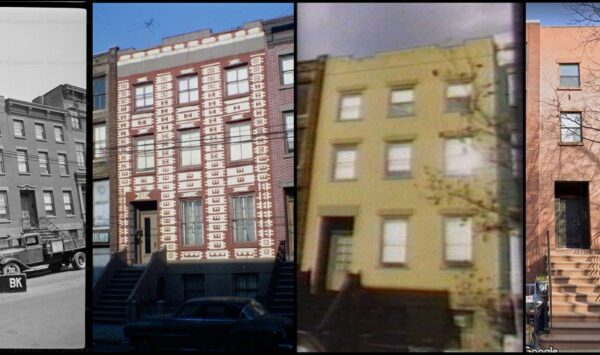
******************************************************************************************************************************** Brownstone Detectives investigates the history of our clients’ homes. The story you are about to read was composed from research conducted in the course of one of those investigations. Do you know the history of YOUR house? ******************************************************************************************************************************** Houses as old as the historic brownstones of New York City have had a lot of time to experience change – change of ownership, change of status, as well as physical change. Much of that change often occurs on the inside of these buildings as their occupancy type changes. The most prevalent change of this type that occurs over time is the change of a property from a single family house to a mutiple dwelling or boarding house. Just outside the Cobble Hill Historic District, sits a much-altered brownstone on Sackett Street between Court and Clinton Streets, No. 275. Constructed pre-1855 as a one-family house it would experience many change over the years. Its original address was No. 160. Its original owner appears to have been William H Perry, a stock broker on Wall Street. By the 1860s, the Forsyth family lived in the Sackett Street rowhouse. Orlando Forsyth was a jeweler who, in the 1840s, had had a showroom on Fulton Street at No. 99. The house would begin taking boarders in the 1870s, continuing at least through most of the 20th century. THE LADY GETS A FACELIFT At face, however, the physical changes of No. 275 seem to be the most striking. While, in its original state, it resembled […]
RESCUE OPERATION ON “BOERUM HILL” (1964)
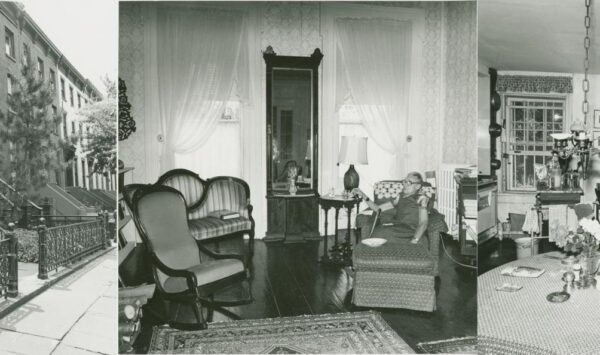
******************************************************************************************************************************** Brownstone Detectives investigates the history of our clients’ homes. The story you are about to read was composed from research conducted in the course of one of those investigations. Do you know the history of YOUR house? ******************************************************************************************************************************** Most Boerum Hill residents do not know the name Helen Buckler – but they should. While she wasn’t instrumental in building Boerum Hill, she was the reason it got its name. She also started the organization that ushered in the wave of brownstoners and brownstoning in the area, the Boerum Hill Association. Brownstoning – or the renovation of brownstones back to their former glory – is not a recent trend. Like many other movements, brownstoning appeared in parts of New York City in waves as good/bad economic times ebbed and flowed, neighborhoods fell in and out of fashion, and young professionals, who were usually the harbingers of those waves, “discovered” New York City’s 19th century brownstones. One of those waves washed over Brooklyn in the early 1960s. Helen Buckler rode, from her Dean Street brownstone, firmly atop the crest of that era’s wave. She named it Boerum Hill. BOERUM HILL BEGINS A few years after Buckler bought No. 238 Dean Street, she started the Boerum Hill Association. Then, already at the age of 70, she was no ordinary brownstoner. Her enthusiasm attracted to the organization approximately 20 like-minded families who were also interested in renovating their brownstones in the area. The purpose of the organization was to improve the community and […]
THE CHANGING FACE OF A STOOP (1921)
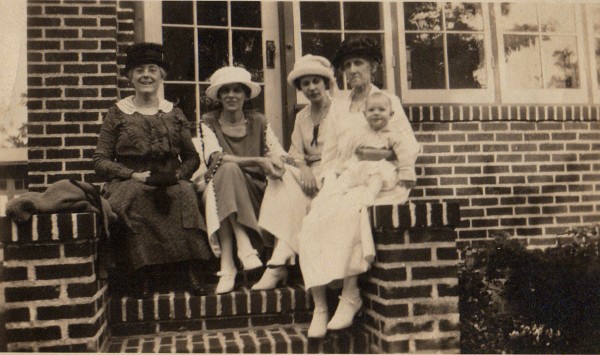
******************************************************************************************************************************** Brownstone Detectives investigates the history of our clients’ homes. The story you are about to read was composed from research conducted in the course of one of those investigations. Do you know the history of YOUR house? ******************************************************************************************************************************** In 1921, the Nilsen family purchased their Bay Ridge home at 8719 Colonial Road. Immediately, it seems, they began to document a lifelong record of their family’s generations, all surrounding one of the more iconic features attached to a Brooklyn home – their stoop. With a fascinating collection of photographs arranged in a chronological order, Bonnie Nilsen – whose father, Frank, is in most of the photographs – laid out her family’s record of life on the stoop of the original Nilsen family home. (The original record – along with Bonnie’s other photographs – can be seen at her website, BonnieNilsen.com.) In the meantime, though, we’d like to share a few of the more “stoop-central” photographs below. (See if you can spot the changes over the years.) Follow @BrownstoneDetec Share ———————————————————————————————————————– The Brownstone Detectives Brownstone Detectives is an historic property research agency. Our mission is to document and save the histories of our clients’ homes. From our research, we produce our celebrated House History Books and House History Reports. Contact us today to begin discovering the history of your home.
THE “GOODFELLAS” OF CUMBERLAND STREET
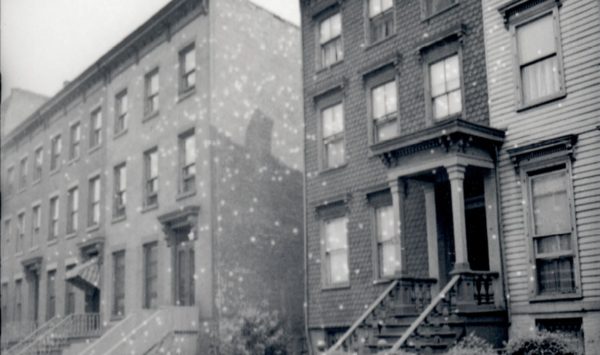
One of the Brownstone Detectives’ first House History Books, No. 231 Cumberland Street: The Story of a House, tells the story of an 1852 antebellum frame home just steps from Fort Greene Park. It’s an action-packed tome, replete with treachery, “poudrette,” “small art,” SROs, and the gangland figures from “Goodfellas.” Here is a brief timeline of the history of this single landmarked property, matched up with “spreads” from the book: THE HISTORY OF A BROOKLYN HOUSE The land beneath which No. 231 would someday rise, started out as a tobacco farm owned by the first Italian immigrant to New York, Pietre Cesare Alberti. The farmland would eventually be built upon in 1851-2, when builder John Ross constructed a row of three homes there. First owned by a woman with a tragic history, a melodrama involving treachery, another man, and an infant daughter – which became the gossip of the newspapers of the time – No. 231 was rented out throughout the the 1850s and 1860s, in addition to many returning Civil War veterans, to merchants and their small families. One of those merchants featured prominently in the founding of the Lafayette Avenue Presbytery Church. Before this, however, he had begun his interesting career as a Night Soil Man – starting a company which, amongst other “agricultural” endeavors, collected human excrement from the backyard privvies of Brooklyn, selling this “compost” to Long Island farmers as the appropriately – if euphemistically – named “poudrette.” The property was then owned by an immigrant, […]
THE RETURN OF AUNT CAR (2013)
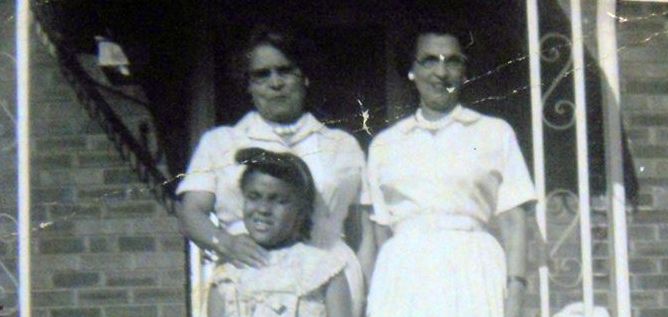
A few years ago, I found a posting on a genealogical site searching for information about a person named Caroline Gill. One of the owners of my house went by that name, so my interest was piqued. I wrote and gave the poster what information I knew, hoping for an exchange. As it turned out, that poster, Stacey Maupin Torres, had more information about Caroline than I ever did, which she began to share with me. In her reply, though, she casually mentioned some information that she didn’t know I already had. She told me that her “Aunt Car” had lived at 738 Macon Street in Brooklyn. As I read her message, I began to realize that I had not divulged to her that I lived in her aunt’s old house. So, imagine Stacey’s surprise when I told her that I was writing to her from that very house! After this revelation, every email we wrote to one another seemed to be pages in length. Stacey would tell me details about her Aunt Car’s and Uncle Henry’s lives (they lived at 738 Macon Street in the 1950s and 1960s), and I would tell her what 738 Macon Street is like now, and send her pictures of the house – including invitations to come and visit. Stacey told me that, in the 1960s, she had lived in Queens and had been to 738 Macon Street with her family many, many times. Her Aunt Car, she explained, had had large family gatherings […]
WE’RE VOTING TODAY – SEE YA T’MORROW!
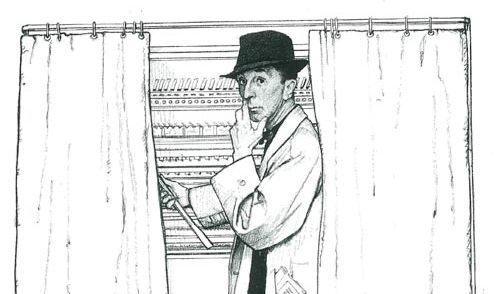
We’re voting today. So we’ll see you tomorrow! If you need to find your polling place – look HERE! Follow @BrownstoneDetec ———————————————————————————————————————– The Brownstone Detectives This story was composed from research performed by The Brownstone Detectives. Allow us do an in-depth investigation of your house and its former owners and produce your very own House History Book. Your hardbound coffee table book will include an illustrated and colorful narrative timeline that will bring the history of your house to life. Contact us today.
THAT KENTILE FLOORS SIGN IN BROOKLYN
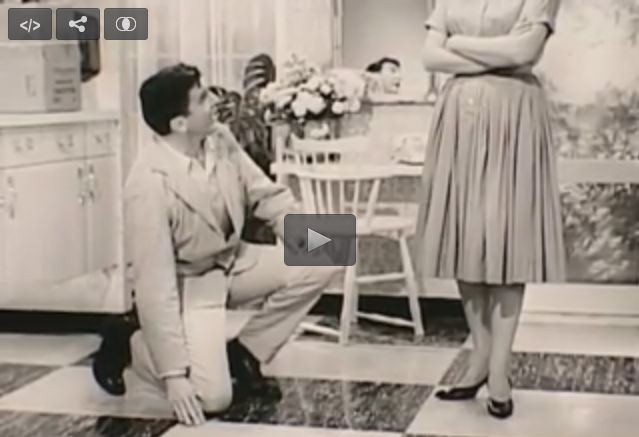
As the salvos are fired across the broadsides of those who would tear down Brooklyn’s famous Kentile Floors sign, few know the history behind the company, its founder, and its legacy. Kentile was a revolutionary floor covering that was easy to install and extremely resistant to fire. The asphalt tiles were primarily composed using an asbestos filler which today is no longer legal, due to the knowledge we currently have of the harmful effects of asbestos on our bodies. But Kentile was a start-up in the late 19th century in Brooklyn that made its inventor rich and many, many housewives much, much happier in their kitchens. IN THE BEGINNING In 1898, Arthur Kennedy founded Kentile in Brooklyn. Kentiles were “large durable tiles made of a range of materials that were available in dozens of colors and patterns.” Kentile Flooring was primarily marketed in Brooklyn and the surrounding region back then, but eventually, as they became popular, spread their availability throughout the country. By 1949, they began producing an asphalt based tile and, as an industry leader, their stock skyrocketed. Although they had their competitors, such companies as Armstrong, Congoleum-Nairin and Montgomery, Kentile offered a consumer-install option that was attractive to the DIY-er. By the ’50s and ’60s, Kentile Floors had become one of America’s largest manufacturers of super-resilient floor tile, and it was a national tile distributor. The Kentile factory at Second Avenue in Gowanus – where the Kentile Floors sign is currently being removed – employed more than 400 […]
